
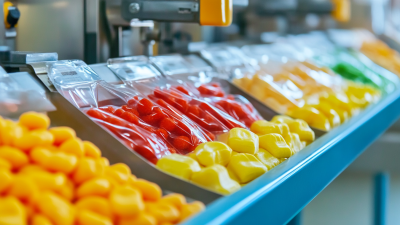
How to Choose the Best Sachet Packing Machine for Your Business Needs
In the growing landscape of the packaging industry, the demand for efficient and versatile equipment has never been higher. The global sachet packaging market has experienced significant expansion, with an estimated compound annual growth rate (CAGR) of 4.5% from 2021 to 2026, according to a recent report by MarketsandMarkets. The versatility of the sachet packing machine allows businesses to package a variety of products, ranging from food and beverages to personal care items, making it an essential investment for manufacturers looking to enhance productivity and maintain competitive advantage.
However, choosing the right sachet packing machine for your specific business needs can be a daunting task given the plethora of options available. Factors such as production capacity, machine efficiency, cost-effectiveness, and maintenance requirements play a crucial role in this decision-making process. As businesses increasingly pivot towards automated packaging solutions to meet consumer demands for convenience and sustainability, understanding how to select the most suitable sachet packing machine becomes paramount for achieving operational excellence and maximizing return on investment.
Read more »
 By:Oliver - May 13, 2025
By:Oliver - May 13, 2025

Comprehensive Handbook on Industrial Packaging Machines for Modern Businesses
In today's rapidly evolving market landscape, businesses are increasingly recognizing the critical role of Industrial Packaging Machines in enhancing operational efficiency and product safety. According to a report by Smithers Pira, the global packaging market is projected to reach over $1 trillion by 2024, driven largely by the rise of automated packaging solutions. This rapid growth emphasizes the necessity for modern enterprises to adopt advanced industrial packaging technologies that not only streamline production processes but also reduce material waste and operational costs.
Furthermore, a comprehensive analysis by MarketsandMarkets indicates that the demand for Industrial Packaging Machines will significantly increase, with a projected CAGR of 8.4% from 2020 to 2025. As industries like food and beverage, pharmaceuticals, and electronics expand, the need for state-of-the-art packaging systems becomes paramount. By leveraging these machines, companies can ensure consistent quality, compliance with regulatory standards, and enhanced customer satisfaction, making them crucial investments for businesses aiming to thrive in today’s competitive environment.
Read more »
 By:Oliver - May 12, 2025
By:Oliver - May 12, 2025

Unlocking Efficiency: Essential Guide to Sourcing Industrial Packaging Equipment Globally
The global industrial packaging equipment market is experiencing significant growth, driven by the increasing demand for efficient and sustainable packaging solutions. According to a recent report by Grand View Research, the market is expected to reach USD 45.2 billion by 2025, expanding at a compound annual growth rate (CAGR) of 4.3% from 2019. This surge is largely attributed to the rising need for damage prevention during shipping and storage, coupled with the growing adoption of automation in manufacturing processes. As businesses strive to enhance their operational efficiency and reduce costs, the sourcing of high-quality industrial packaging equipment has become a crucial component of their supply chain strategy.
Moreover, the challenges in sourcing these essential tools on a global scale cannot be overlooked. Variations in regulations, quality standards, and technological advancements across different regions can complicate the sourcing process. Organizations must also consider the competitive landscape, as the industry is characterized by a multitude of suppliers offering diverse packaging solutions. To navigate this complex market effectively, it is essential for businesses to adopt a strategic approach to sourcing industrial packaging equipment, focusing on quality, cost-effectiveness, and sustainability. This guide aims to provide valuable insights and practical steps to optimize your sourcing strategy, unlocking enhanced efficiency and performance in your operations.
Read more »
 By:Lila - May 9, 2025
By:Lila - May 9, 2025
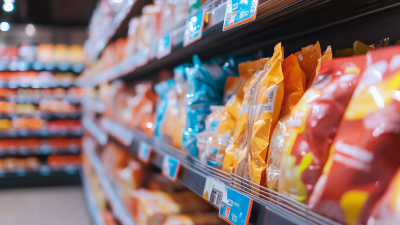
Unlocking Efficiency in Packaging with Vertical Form Fill Seal Machines
In today's fast-paced manufacturing environment, efficiency is the key to staying competitive, particularly in the packaging industry. One of the most effective solutions that has emerged in recent years is the Vertical Form Fill Seal Machine. This innovative technology not only streamlines the packaging process but also enhances overall productivity by minimizing labor costs and reducing material waste. As businesses seek to optimize their operations, understanding the benefits and applications of Vertical Form Fill Seal Machines becomes essential for achieving success.
As companies continue to face evolving market demands and the pressure to deliver products quickly, embracing advanced packaging solutions is more important than ever. Vertical Form Fill Seal Machines offer unparalleled versatility and speed, allowing manufacturers to package a wide range of products efficiently. This blog will explore the various advantages these machines offer, highlighting how they can unlock new levels of efficiency in packaging operations and help businesses thrive in a competitive landscape.
Read more »
 By:Oliver - May 8, 2025
By:Oliver - May 8, 2025
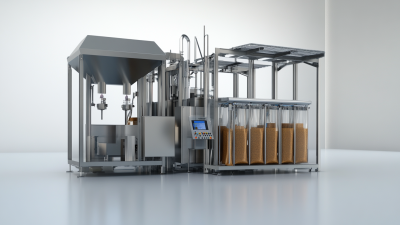
Sachet Filling Machine Innovations Transforming Global Packaging Solutions
In today's fast-paced consumer market, the demand for efficient and innovative packaging solutions has never been higher. One area that has seen significant advancements is the realm of sachet filling machines. These machines play a crucial role in the packaging industry, allowing companies to streamline their production processes while ensuring product integrity and extending shelf life. As businesses strive to meet the diverse needs of their customers, innovations in sachet filling machines are transforming the landscape of global packaging solutions.
The evolution of these machines reflects not only technological advancements but also a growing emphasis on sustainability and versatility in packaging. From food and beverage products to pharmaceuticals and personal care items, the applications of sachet filling machines are vast and varied. This blog will explore the latest innovations in sachet filling technology, examining how manufacturers are adapting to changing market demands and enhancing operational efficiency. Through this lens, we will uncover the impact of these innovations on packaging strategies worldwide, demonstrating how sachet filling machines are shaping the future of the industry.
Read more »
 By:Ethan - May 6, 2025
By:Ethan - May 6, 2025

2025 Revolution in Automated Packaging: The Definitive Guide for Global Buyers
In an era where efficiency and speed are paramount, the packaging industry is on the brink of a revolutionary transformation. By 2025, the advancements in Automated Packaging Machines are set to redefine how products are packaged, stored, and shipped across the globe. This definitive guide aims to equip global buyers with comprehensive insights into the latest technologies, trends, and best practices in automated packaging solutions. Understanding these innovations is essential for businesses looking to streamline their operations and remain competitive in a rapidly evolving market.
As we delve deeper into the world of Automated Packaging Machines, it becomes clear that these systems are more than just a mechanized solution; they represent a strategic approach to enhancing productivity and sustainability. This guide will explore various aspects, including cutting-edge machinery options, cost considerations, and the integration of smart technology. By leveraging the advancements in automated packaging, businesses can optimize their workflows, reduce labor costs, and increase overall efficiency. Join us on this journey to uncover the future of packaging and its implications for global buyers in 2025 and beyond.
Read more »
 By:Ethan - May 6, 2025
By:Ethan - May 6, 2025
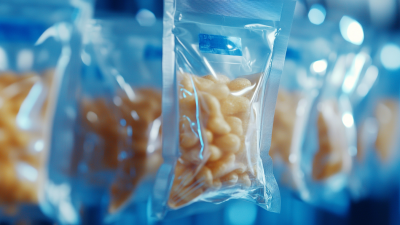
Mastering the Art of Sachet Packing: A Comprehensive Guide to Optimizing Your Efficiency
In today's fast-paced world, efficiency is paramount in the packaging industry, particularly when it comes to pouching and sachet production. With the rising demand for ready-to-use products across various sectors, mastering the art of sachet packing has become essential for businesses looking to maintain competitiveness and meet consumer needs. The effectiveness of a Sachet Packing Machine plays a crucial role in streamlining this process, offering the ability to package products quickly and accurately while conserving resources.
This comprehensive guide aims to delve into the intricacies of sachet packing, providing valuable insights into optimizing your operations for enhanced productivity. We will explore key aspects such as machinery selection, best practices, and innovative techniques to maximize efficiency. Whether you are a seasoned professional in the packaging arena or a newcomer seeking to enhance your approach, this guide will equip you with the necessary tools to refine your sachet packing process and achieve outstanding results.
Read more »
 By:Ethan - May 6, 2025
By:Ethan - May 6, 2025
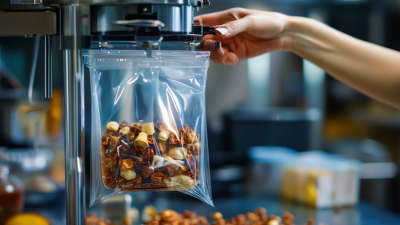
5 Best Innovations in Pouch Filling Machines You Should Know
In recent years, the packaging industry has witnessed significant advancements, particularly in the realm of pouch filling machines. According to a report by MarketsandMarkets, the global pouch packaging market is projected to reach USD 10.8 billion by 2025, growing at a CAGR of 4.8% from 2020. This growth can be attributed to the increasing consumer demand for convenient, lightweight, and eco-friendly packaging solutions. As businesses strive to enhance productivity and reduce operational costs, pouch filling machines have emerged as a vital component of modern packaging lines, providing efficiency and flexibility that traditional methods lack.
Innovations in pouch filling machines are transforming how products are packed, ensuring not only faster production times but also higher accuracy and sustainability. With features like advanced automation, integration with AI and IoT technologies, and enhanced hygienic designs, these machines cater to a variety of sectors, from food and beverages to pharmaceuticals. Industry experts emphasize that investing in cutting-edge pouch filling technology not only boosts competitive advantage but also meets evolving consumer preferences for quality and safety. In this blog, we will explore the five best innovations in pouch filling machines that every manufacturer should consider.
Read more »
 By:Ethan - May 1, 2025
By:Ethan - May 1, 2025

Exploring Coffee Packaging Innovations: Challenges in Sustainability and Design
In recent years, the coffee industry has experienced a surge in innovations, particularly in the realm of packaging. As consumers become increasingly aware of environmental issues, the demand for sustainable solutions has intensified, pushing companies to rethink their approach to Coffee Packaging Bags. This shift is not merely about aesthetics; it involves a careful balance between functional design and ecological responsibility. The need for packaging that preserves freshness while minimizing environmental impact poses significant challenges for brands striving to stand out in a competitive market.
Navigating the complexities of sustainable design means addressing various factors, such as material selection, production methods, and end-of-life disposal options. As coffee roasters and retailers experiment with alternative materials and innovative designs, they face obstacles that can hinder the transition toward greener practices. This blog will explore the latest trends in Coffee Packaging Bags, highlighting the hurdles encountered by industry leaders and the creative solutions being implemented to meet consumer expectations without compromising sustainability. Join us as we delve into the world of coffee packaging innovations and the journey toward a more sustainable future.
Read more »
 By:Oliver - April 29, 2025
By:Oliver - April 29, 2025

Exploring Sachet Filling Machines Features and Applications for Optimal Production Efficiency
Efficiency is the watchword in speedy packaging; be it a manufacturer for food, beverages, or anything else, efficiency becomes the top priority. Different machines that have improved the way powders, granules, and liquids are packed include Sachet Filling Machines. Such advanced machines have changed the definition of packing for all the users around the globe. MarketsandMarkets' new report projects the global sachet packaging market to reach USD 47.5 billion by 2026, a CAGR of 5.2% in 2021-2026. With such rapid growth, it is also clear that there is automation and technology in packaging operations, which makes sachet filling machinery a must-have asset for organizations seeking to improve production capacity and consumer satisfaction.
It is now becoming increasingly evident that as the industries progress, so should the need for versatility in packaging solutions. The sachet filling machines have become very versatile with options meant for applications ranging from food and beverage through pharmaceuticals to personal care applications. According to the Mordor Intelligence study, the sachet packaging market will mainly be pulled by the food segment, as there is greater demand for convenience and portion control products. Thus, maximizing production efficiency, minimizing materials waste, and ensuring product integrity can be achieved by exploiting the innovative features on the modern sachet filling machines. Overall, this will drive the efficiency and effectiveness of operation and profitability.
Read more »
 By:Lila - April 28, 2025
By:Lila - April 28, 2025

Revolutionizing Supply Chains: The Next Era of Food Packing Machines in Global Markets
In a global market that is ever-changing, innovative practices in the supply chain have emerged, especially in the food sector. Recently, a study by the International Food Packaging Association stated the global food packing machine market is estimated to be at USD 50 billion by the year 2027 with a CAGR growth of 5.8%. This increase can be attributed to the rising demand for packaged food with changing lifestyles and greater concerns for food safety and proper shelf life. With increasing complexity in supply chains, food packing machines must integrate advanced technology to facilitate operations, minimize waste, and increase productivity.
The next generation of food packing machines will change how food products are handled, processed, and delivered. Automation and smart technologies may provide greater accuracy and speed for companies in packaging operations meeting the dynamic requirements posed by consumers. The report published by Markets and Markets further accentuates that the incorporation of sustainable packaging solutions has become an important priority for manufacturers addressing environmental concerns as well as improving brand image. When we look at the transformative impacts of food packing machines on supply chains, it is evidently clear that this innovation will become the catalyst for shaping food distribution in the global markets in the future.
Read more »
 By:Ethan - April 26, 2025
By:Ethan - April 26, 2025
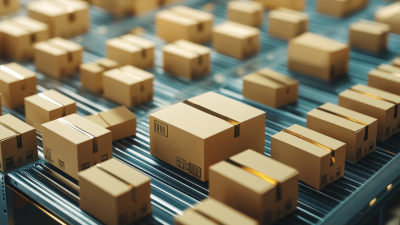
Innovative Trends Shaping Automated Packing Machines for Global Supply Chains in 2025
Technology plays a critical role in the fast-evolving world of supply chains. Among the many advancements that influence logistics, Automated Packing Machines represent a paradigm shift. By 2025, new trends in automated packing will continue to reinvent the arenas of efficiency and accuracy in packaging processes, for the very purpose of streamlining operations for businesses worldwide. So, it's like packing machines enhanced with AI capabilities, robotics, and analytics. That is really what is required nowadays for increased speed and accuracy in e-commerce and global distribution systems.
Smart technologies embedded into Automated Packing Machines are not just for the sake of automating dead-end tasks anymore, but in fact see the big picture of the optimization of the whole supply chain from waste minimization to packing speed improvement. And they affect every corner of this innovation. The continually changing industries adapting to different consumer preferences and expectations will require knowledge of the trends that shape the automated packing systems. Hence, this is what would benefit organizations to fight for the competitive edge. This blog will examine the essential innovations and future predictions about Automated Packing Machines with implications for global supply chains.
Read more »
 By:Lila - April 25, 2025
By:Lila - April 25, 2025
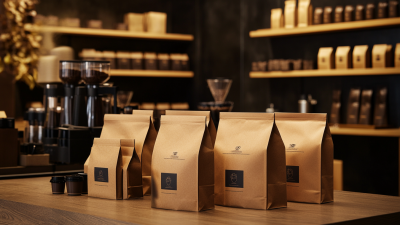
Innovative Coffee Bag Design Examples and How They Transform Your Brand Strategy
The coffee market today is quite competitive, with differentiation of brands. One of the most effective ways of getting a product distinguished is to work on innovative Coffee Bag Design. The Specialty Coffee Association reported that 68% of consumers had bought a product because of the packaging appeal. This somehow emphasizes the influence of design on buying decisions, proving that an attractive coffee bag may lure in consumers and create a long-lasting impression. With an anticipated CAGR of 4.4% through the year 2026, the packaging strategy should thus be exploited by the brands for unique positioning and building loyal customer bases.
The design of coffee bags, besides protecting the product's integrity, acts as a marketing medium that conveys the story and values of the brand. Recent research has indicated that 52% of consumers would be swayed in trying out a new product due to its packaging. With brands becoming more sustainable, the packaging becomes even more attractive when eco-friendly materials are introduced. This blog will take a look at the innovative coffee bag design approaches highlighting how these methods can change your brand's economic landscape and enhance consumer engagement.
Read more »
 By:Oliver - April 23, 2025
By:Oliver - April 23, 2025


